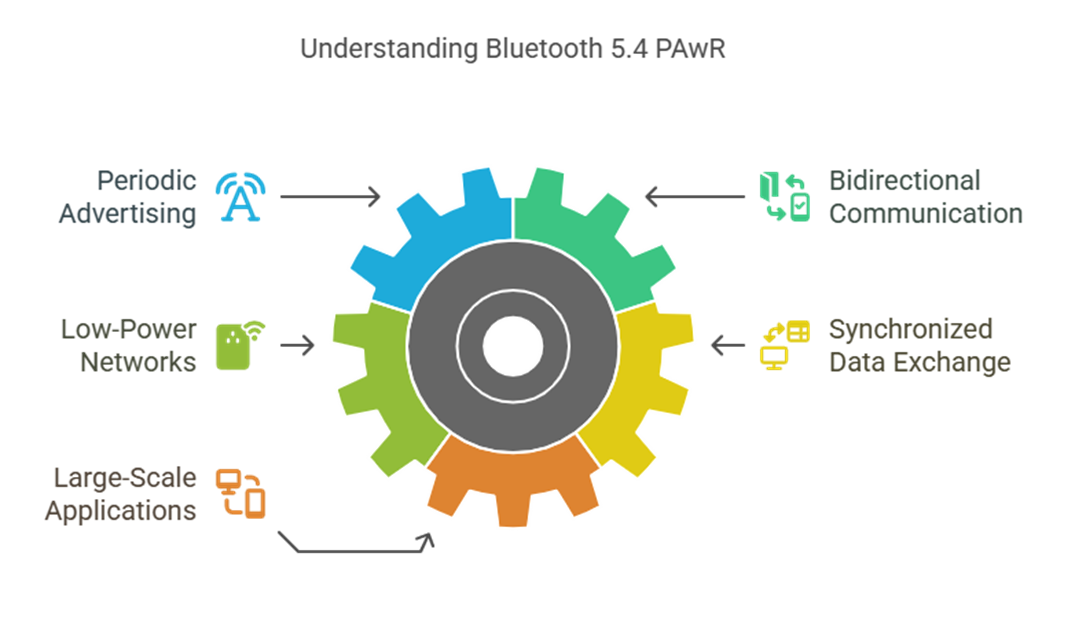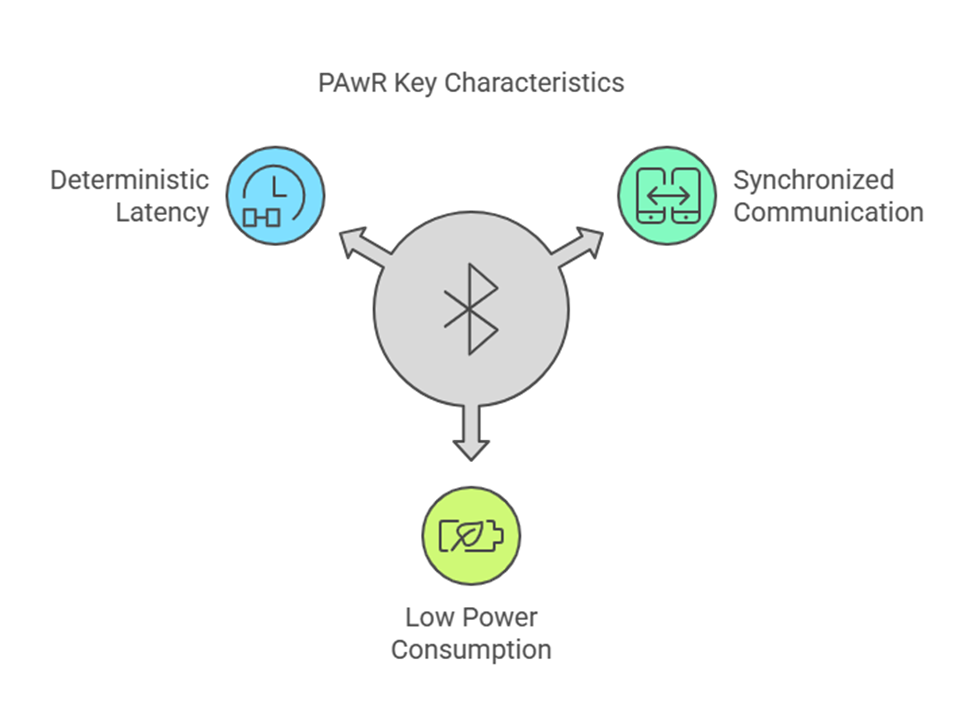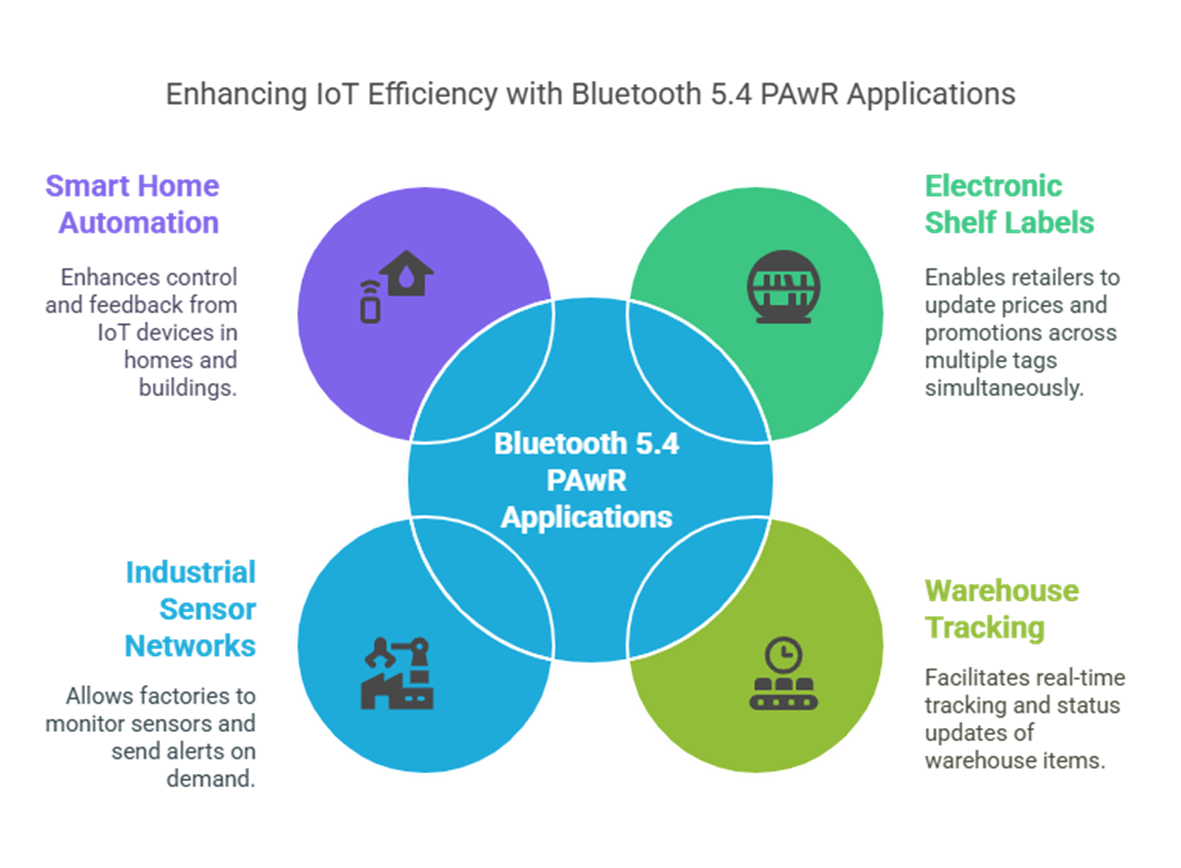Bluetooth 5.4 Periodic Advertising with Responses (PAwR) Application Explanation
Bluetooth 5.4 Periodic Advertising with Responses (PAwR) Application Explanation
[TAIWAN, 27th Mar. 2025]
Bluetooth 5.4 introduces Periodic Advertising with Responses (PAwR), a feature designed to enhance efficiency in large-scale, low-power device networks. PAwR enables bidirectional communication within periodic advertising events, making it ideal for applications requiring synchronized, low-latency data exchange among many devices.

Core Concepts of PDWR
Periodic Advertising
Bluetooth 5.4 retains the Periodic Advertising feature from earlier versions, allowing devices to broadcast data (e.g., sensor readings, location information) at fixed intervals without establishing a full connection (Connectionless Communication). This makes it suitable for one-to-many transmissions.
New "With Responses" Mechanism
The key enhancement in PDWR (Periodic Advertising with Responses) enables the receiving device (Scanner) to send a brief response after receiving a periodic advertising packet. Examples include:
l Acknowledging data receipt (ACK).
l Requesting the advertiser to adjust parameters (e.g., frequency, data content).
l Triggering the advertiser to provide additional information.
This improvement introduces lightweight bidirectional communication while maintaining the low-power advantages of connectionless advertising.
Key Characteristics of PAwR:
l Synchronized & Scalable – Supports one-to-many and many-to-one communication, allowing a central device (e.g., a smartphone or gateway) to interact with numerous nodes (e.g., sensors or tags) in a structured manner.
l Low Power Consumption – Optimized for battery-operated devices, as responses are efficiently scheduled within predefined advertising intervals.
l Deterministic Latency – Devices communicate in designated time slots, reducing collisions and ensuring reliable data delivery.

Applications of Bluetooth 5.4 PAwR:
l Electronic Shelf Labels (ESL) – Retailers can update prices or promotions across thousands of tags simultaneously while receiving acknowledgments or inventory requests.
l Warehouse & Asset Tracking – PAwR enables real-time tracking of tagged items with periodic status updates and bidirectional queries.
l Industrial Sensor Networks – Factories can monitor multiple sensors (temperature, humidity) while allowing sensors to send alerts or data on demand.
l Smart Home & Building Automation – Central hubs can control and receive feedback from numerous IoT devices (lights, locks) efficiently.

Advantages Over Previous Bluetooth Versions:
lUnlike traditional Bluetooth Low Energy (BLE) advertising, PAwR reduces overhead by embedding responses within periodic broadcasts.
lEnhances network density by managing hundreds or thousands of devices without congestion.
|
Feature |
Traditional Bluetooth LE |
Bluetooth 5.4 PAwR |
|
Communication Type |
Unidirectional (advertising) or Connection-based (bidirectional) |
Bidirectional (within periodic advertising) |
|
Scalability |
Limited |
High (supports thousands of devices) |
|
Power Efficiency |
Moderate |
Ultra-low (scheduled responses, no persistent connection) |
|
Latency |
Variable |
Deterministic (time-synchronized slots) |
|
Network Topology |
Point-to-point or broadcast-only |
Star or tree (1-to-many or many-to-1) |
|
Use Case Examples |
Wearables (e.g., fitness trackers) |
Electronic Shelf Labels (ESL) |
|
Overhead |
Higher |
Low |
|
Synchronization |
Requires additional protocols |
Built-in time-synchronized slots |
|
Maximum Device Density |
Limited by advertising channel congestion |
Optimized for dense deployments (1000s of nodes) |
In summary, Bluetooth 5.4 PAwR is optimized for massive, low-power IoT deployments requiring reliable, two-way communication with minimal energy consumption.
Edited by Intl. Commercial Development Manager: Mr. Tim Chien



